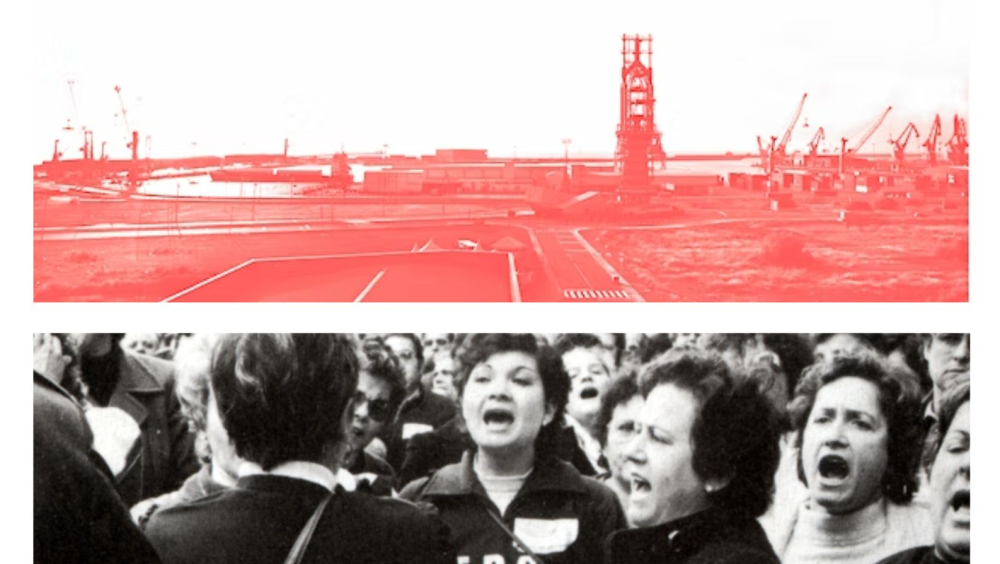40 years of the industrial conversion of Puerto de Sagunto. Learning our past
This 2023 marks the 40th anniversary of the industrial reconversion of Puerto de Sagunto. In 1983 the government of Spain approved the Decree Law of Reconversion and Industrialization, which involved the closure and dismantling of the steel factory of Puerto de Sagunto. This measure was frontally opposed by the workers, who staged strong and violent protests in defense of their jobs. Finally, this struggle did not prevent the closure in 1984, but it served to keep in mind the workers' movement and industrial memory. The Effects and Spare-Parts Warehouse (future Industrial and Workers' Memory Museum) organizes several activities to commemorate the workers' memory. The foundation organize a series of family activities that pay homage to those workers who contributed to the success of the large industrial factory that determined the vital rhythms and the very existence of the population center of the Port of Sagunto. Creative workshops on the mobilizations of workers, the Puerto Sagunto’s industrial landscape and activities closely linked to the implementation of the sustainable development goals will culminate with a large participatory exhibition.
The old Effects and Spare Parts Warehouse, built in 1927 by the Mediterranean Steel Company to store dies and spare parts. This building was saved from demolition, after the closure of Altos Hornos del Mediterráneo in 1984, with the purpose of creating a museum that would tell the origin and development of the factory city of Puerto de Sagunto. After the rehabilitation last year, we find a large cultural container that will allow us to know many of the key pieces and documents of the industrial history of Puerto de Sagunto, as well as the workers' movement. This space is part of an industrial complex that shows the closest living heritage for the population of Puerto de Sagunto. The restoration of the Nº2 Blast Furnace is remarkable and recognized with the Europa Nostra 2012. Therefore, it is interesting to value the roots and local heritage, to strengthen the values of the place and thus, indirectly, achieve settlement of the population and growth of employment. The creation of activities for families with the common theme of knowing the heritage and industrial history of Puerto de Sagunto are part of this proposal. The city went into depression due to the industrial reconversion of the 80s in Spain, with the closure of its Blast Furnaces. The same steel and iron factories that turned it since the early twentieth century into a reference of heavy industry in Spain. So this industrial heritage arises from the abandonment and dismantling of the industrial city (heart of Puerto de Sagunto) after decades of being protagonists of one of the pioneer steel productions throughout Europe. It was a very claimed moment and that captured many media. That moment of workers' struggle was captured in the press throughout Spain and was an example of workers' mobilization. There were huge mobilizations, but they did nothing to stop the decision. We will pay tribute to all those people who, through slogans and large banners, communicated beyond their territory the devastating closure of one of the benchmarks of iron and steel in Spain and Europe. We will create the atmosphere and accessories for the characters with which the participants will work. The Fuster is a recycled wood character that will come to life with the intervention of each participant. In other part of the activities, we propose to learn the evolution of the population from its origins to the present day, knowing the most popular buildings through its silhouette and the uniqueness of them. Through profiles such as the Nº2 Blast Furnace, the General Workshops warehouse or the homes of the engineers, decorating them and then placing them in a tubular space simulating a diorama, we discover the vision that its smallest inhabitants have of their streets. By other part, the Sustainable Development Goals (SDGs) contribute to bringing together cities, organizations, local governments and networks, by sharing their transformation policies and challenges for the future of our planet. All cities have the germ of sustainable development through their heritage, often hidden behind a lack of knowledge of the value of their own, of the identity values of the place. In addition, new uses of existing buildings, including monumental ones, are essential to rediscover the history of place (SDG11), economize on material (SDG12) and thereby create quality education for future generations (SDG4). In this framework, we develop a heritage didactic workshop interested in architecture and their landscapes.
After a prolonged period of strong growth, the Spanish steel industry suffered a deep crisis from 1975. The dismantling of the Blast Furnaces in the 80s-90s created a turning point all around Europe. Europe has been characterized in the last two centuries for the industrial activity. Industrial buildings are the testimony of economic and social development, the expression of local identity and the working-class memory from a community. Conserving and restoring them to later turn them into spaces for citizenship, it is possible to keep alive important European historical, social and architectural values. The industrial heritage offers many opportunities as a tourist resource, cultural and generator of multiple activities that bring society together.
